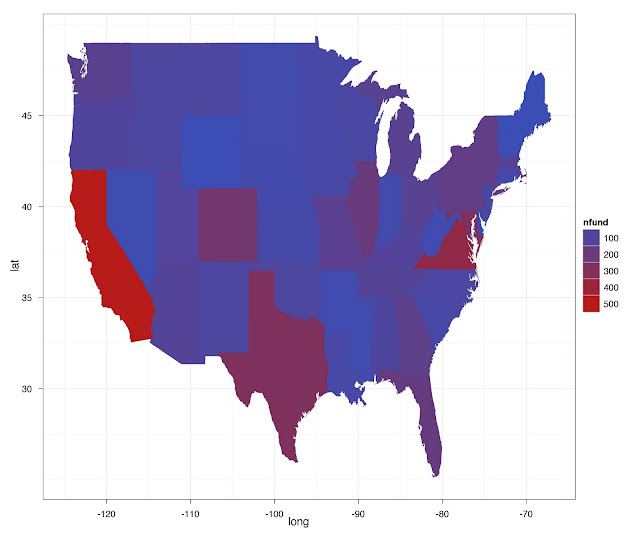UPDATE: I fixed the code to use 'dcast' instead of 'cast'. And library(ggplot2) instead of library(plyr) [plyr is called along with ggplot2]. Thanks Bob!
Also, see another post on this topic:
-http://news.mrdwab.com/2010/08/08/using-the-reshape-packagein-r/
Created by Pretty R at inside-R.org
# simply pivot table dcast(dataset, var1 ~ var2 + var3) Using meas as value column. Use the value argument to cast to override this choice var1 level1_h level1_m level2_h level2_m 1 a 1 2 3 4 2 b 5 6 7 8 3 c 9 10 11 12 4 d 1 2 3 4 5 e 5 6 7 8 6 f 9 10 11 12
# mean by var1 and var2 dcast(dataset, var1 ~ var2, mean)
Using meas as value column. Use the value argument to cast to override this choice var1 level1 level2 1 a 1.5 3.5 2 b 5.5 7.5 3 c 9.5 11.5 4 d 1.5 3.5 5 e 5.5 7.5 6 f 9.5 11.5 # mean by var1 and var3 dcast(dataset, var1 ~ var3, mean) Using meas as value column. Use the value argument to cast to override this choice var1 h m 1 a 2 3 2 b 6 7 3 c 10 11 4 d 2 3 5 e 6 7 6 f 10 11
# mean by var1, var2 and var3 (version 1) dcast(dataset, var1 ~ var2 + var3, mean)
Using meas as value column. Use the value argument to cast to override this choice var1 level1_h level1_m level2_h level2_m 1 a 1 2 3 4 2 b 5 6 7 8 3 c 9 10 11 12 4 d 1 2 3 4 5 e 5 6 7 8 6 f 9 10 11 12 # mean by var1, var2 and var3 (version 2) dcast(dataset, var1 + var2 ~ var3, mean)
Using meas as value column. Use the value argument to cast to override this choice var1 var2 h m 1 a level1 1 2 2 a level2 3 4 3 b level1 5 6 4 b level2 7 8 5 c level1 9 10 6 c level2 11 12 7 d level1 1 2 8 d level2 3 4 9 e level1 5 6 10 e level2 7 8 11 f level1 9 10 12 f level2 11 12 # use package plyr to create flexible data frames... dataset_plyr <- ddply(dataset, .(var1, var2), summarise, mean = mean(meas), se = sd(meas), CV = sd(meas)/mean(meas) ) > dataset_plyr var1 var2 mean se CV 1 a level1 1.5 0.7071068 0.47140452 2 a level2 3.5 0.7071068 0.20203051 3 b level1 5.5 0.7071068 0.12856487 4 b level2 7.5 0.7071068 0.09428090 5 c level1 9.5 0.7071068 0.07443229 6 c level2 11.5 0.7071068 0.06148755 7 d level1 1.5 0.7071068 0.47140452 8 d level2 3.5 0.7071068 0.20203051 9 e level1 5.5 0.7071068 0.12856487 10 e level2 7.5 0.7071068 0.09428090 11 f level1 9.5 0.7071068 0.07443229 12 f level2 11.5 0.7071068 0.06148755
# ...to use for plotting qplot(var1, mean, colour = var2, size = CV, data = dataset_plyr, geom = "point")






